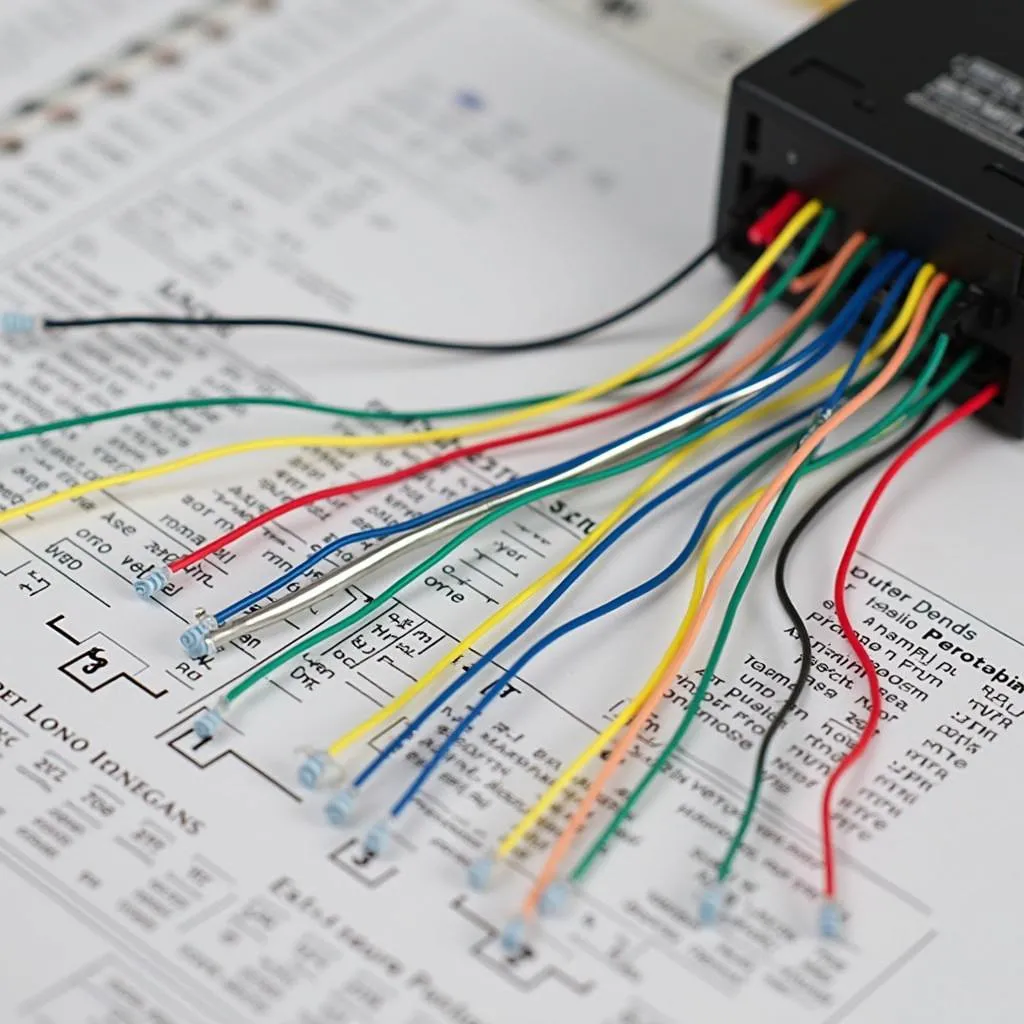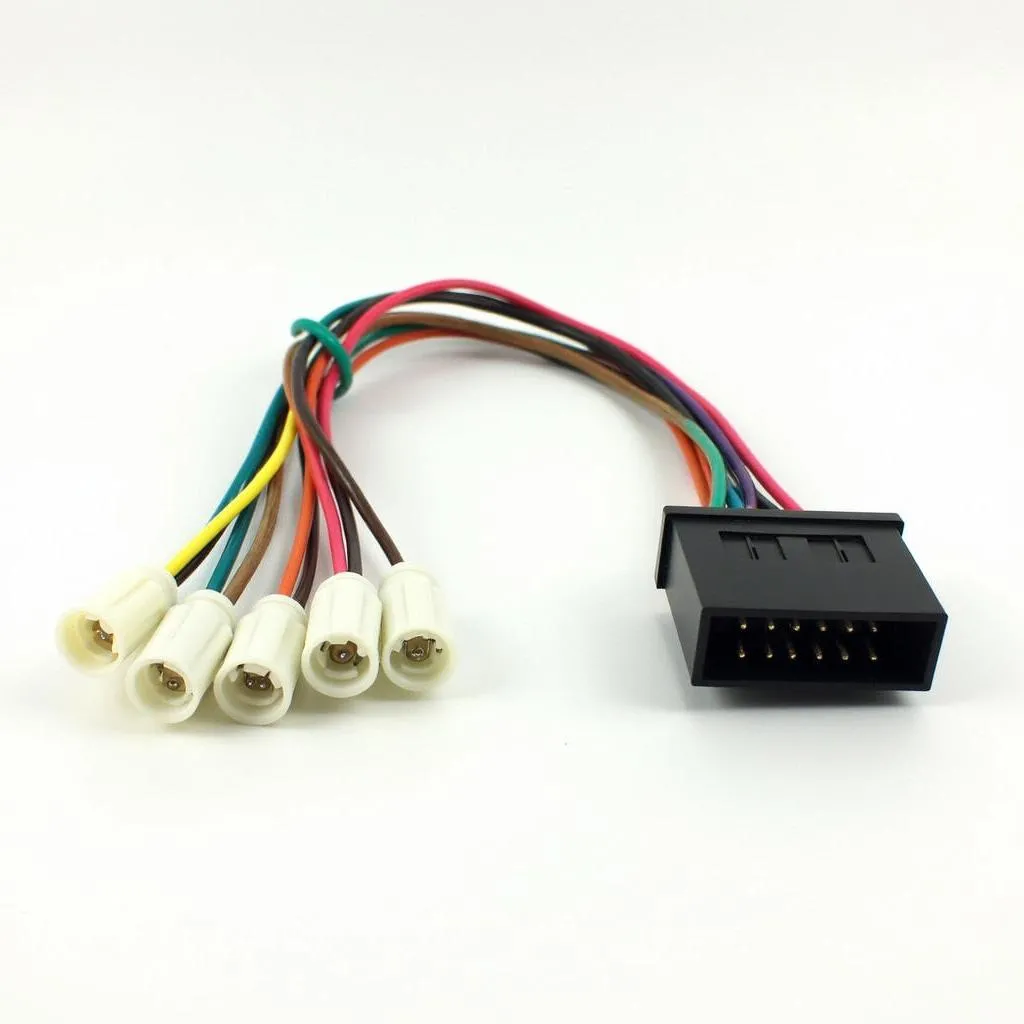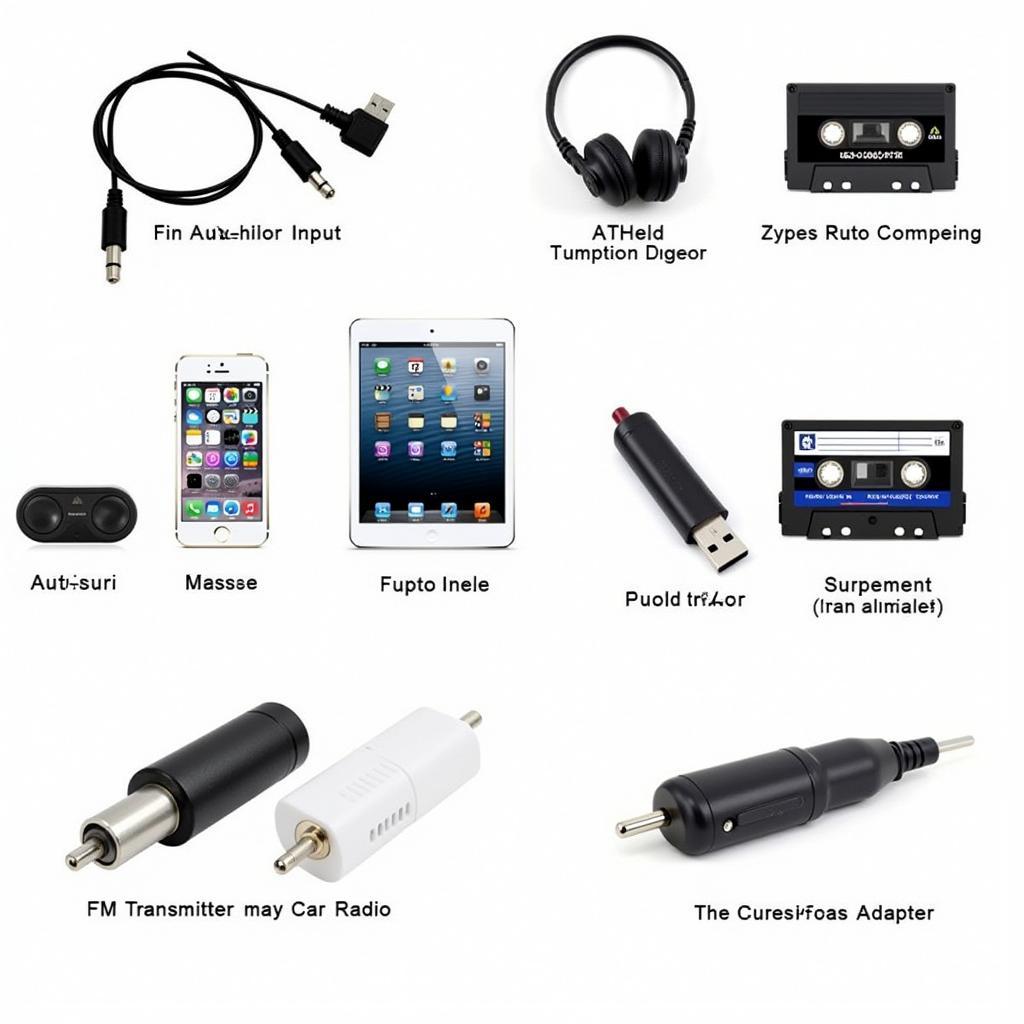Upgrading your car stereo can drastically improve your driving experience. However, many car owners wonder, “Is there a standard wiring for car replacement radio?” The answer, unfortunately, isn’t a simple yes or no. Let’s dive into the intricacies of car radio wiring and shed some light on this common question.
Understanding Car Radio Wiring
While a universal, one-size-fits-all wiring harness doesn’t exist, there are standardized color codes and practices within the industry. Most car manufacturers adhere to these standards, making the process less daunting than it might initially seem.
Common Car Radio Wiring Issues
Even with these standards, you might encounter a few common issues when replacing your car radio:
- Different Wiring Harnesses: Car manufacturers may use different harnesses for various models or model years, even within the same brand.
- Aftermarket Variations: Aftermarket radios often come with their own wiring harnesses, requiring you to splice wires or use an adapter.
- Cut or Damaged Wires: Previous installations or repairs could have resulted in cut, damaged, or incorrectly connected wires.
Identifying Wiring Issues
Before you start tearing into your dashboard, a few telltale signs indicate potential wiring issues:
- No Power to the Radio: This could be a blown fuse, a faulty wiring harness connection, or a problem with the car’s electrical system.
- Intermittent Sound: Loose or poorly connected speaker wires often cause intermittent or distorted audio.
- Incorrect Speaker Function: If your speakers aren’t working correctly (e.g., front speakers play in the back), it usually points to miswired connections.
Essential Tools for Car Radio Wiring
Having the right tools can make your car radio installation smoother:
- Wiring Diagram: This is crucial! You can usually find these in your car’s owner’s manual or online.
- Wire Strippers/Cutters: Essential for preparing wires for connections.
- Electrical Tape: Use this to insulate any exposed wires.
- Crimping Tool and Connectors: For making secure and reliable wire connections.
- Multimeter: A handy tool for testing continuity and voltage.
Steps to Identify and Troubleshoot Car Radio Wiring
- Consult Your Wiring Diagram: Your wiring diagram is your roadmap. It identifies the function of each wire by its color and location.
- Check for Power: Using a multimeter, verify that power is reaching the radio harness.
- Inspect the Wiring Harness: Examine the harness for any signs of damage, wear, or loose connections.
- Test Speaker Connections: Use the multimeter to test for continuity between the radio harness and each speaker.
 Car radio wiring diagram
Car radio wiring diagram
FAQs about Car Radio Wiring
Q: Can I install a new radio myself, or should I consult a professional?
A: While installing a car radio yourself is possible, it requires some electrical knowledge. If you’re not comfortable working with wiring, it’s best to consult a professional.
Q: Where can I find a reliable wiring harness adapter for my car?
A: You can find wiring harness adapters at most car audio stores or online retailers like Crutchfield or Amazon. Make sure to choose an adapter that’s compatible with your car’s make, model, and year, as well as your new radio.
Q: My car has steering wheel controls. Will they work with my new radio?
A: You may need an additional adapter to retain steering wheel control functionality with an aftermarket radio.
 Car radio wiring harness adapter
Car radio wiring harness adapter
Get Expert Help with Cardiagtech
Navigating the world of car electronics can be complex. If you’re struggling with car radio wiring or any other automotive electrical issues, Cardiagtech is here to help. Our team of experts provides remote diagnostics, programming, and software installation services to get you back on the road with a perfectly functioning sound system.
Contact CARDIAGTECH today to learn more about our services and how we can assist you.
This article provides general information and may not apply to all vehicles. Always consult your owner’s manual or a qualified professional for specific guidance on your vehicle.

